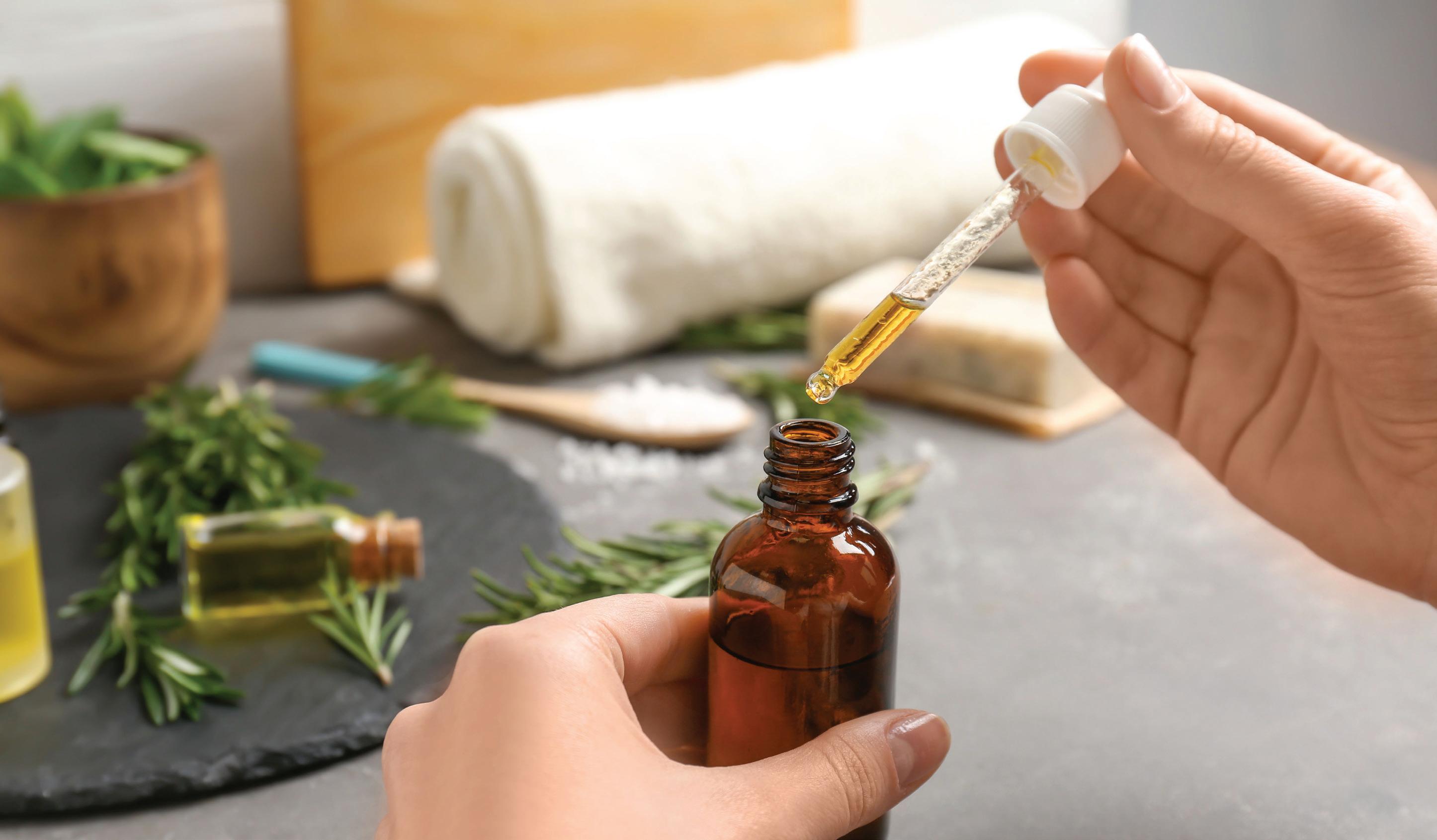
5 minute read
alternative approach
from MT 55 Spring 2020
by Missoulian
Getting to the essence
Essential oils can be beneficial, but they should be used with caution
Advertisement

TREVA LIND The Spokesman-Review
Essential oils show up seemingly everywhere. They’re in lotions, hair care products, aromatherapy, cleaning supplies and more. As gifts, they might arrive in little jars with a diffuser device. Essential oils are steam distilled or cold-pressed extracts of almost any part of a plant such as seeds, flowers, fruit, leaves, stems and roots — so they retain natural smells and flavors. Think lavender or jasmine.
Depending on which oil, the products are touted as helping with sleep, alertness, relaxation and other benefits, but are they always safe? While they’re benign for many users if properly used, some people report allergic reactions or breathing problems — potentially an asthma concern.
“There is no evidence that essential oils can help asthma,” said Melanie Carver with the Asthma and Allergy Foundation of America. “In fact, breathing in the particles released by the oils may actually trigger airway inflammation and asthma symptoms.”
“It is best to talk with your health care provider before trying anything new.” Consumers also should be mindful that bottled essential oils are highly potent and “50 to 100 times” more concentrated
13 mt55mag.com than the oils in the plant itself, a Dec. 10 Washington Post article cited.
Research offers promising results, along with mixed evidence of health benefits for essential oils, said the article, which included comments from Harpreet Gujral, director of integrative medicine at Sibley Memorial Hospital in Washington, D.C. “The research is quite promising,” Gujral said. She also cited continuing clinical studies striving to measure the degree to which oils can alleviate symptoms of anxiety and nausea, as well as how they affect mood. “The results are mixed, but the research is there,” she said. “We just need more.”
About 10 of 100 most common essential oils have been researched “in great depth” in recent decades, the article cited, with evidence such as “the cooling sensation of peppermint oil, the bacteria-killing power of tea tree oil or the calming effect of lavender,” but the results aren’t guaranteed for everyone.
As products distilled from plants, essential oils — like vitamins — aren’t regulated by the Food and Drug Administration.
Sandy Falkner and Peggy Ward of Spokane, Washington, tell people that if you’re new to essential oils, it’s best to start with a small amount applied cautiously. The sisters use essential oils and sell them as distributors for Young Living Essential Oils.
“We always say start low and go slow, meaning you want to start by applying a small amount to the bottom of feet to see if you’ll have a reaction,” Ward said. “Every human body is different.”
If using an essential oil in a diffuser, Ward also suggests that people try a shorter period of time at first to test for any reactions. Ward said she has allergies, including to citrus, along with an almond sensitivity.
“I haven’t found any challenges with using any of the essential oils, although I have a ton of allergies. I can’t eat citrus, but I can consume and use citrus oils without an effect.
“The reason for that is with steam distillation or cold-press distillation that is done in the citrus oil, it removes the protein that most people would have an allergic reaction to.”
She said another consideration is the quality and purity of oils used. Research a company to make sure there aren’t additives.
“If you’re using a lowergrade oil, perfume oil or a floral water, you’re not going to get the effects,” Ward said. “And there’s a good chance they’re going to
contain synthetics, pesticides, fertilizers or chemical extenders.”
Pure coconut, grapeseed or virgin olive oil can be used to dilute an essential oil for topical use, she said. These carrier oils have larger molecules than essential oils, Ward added, so a mixture will penetrate skin at a slower rate.
Ward added that peppermint oil is an example of an essential oil that should be used cautiously and diluted with a carrier oil. Young Living says on its website that
peppermint’s cooling sensation can be too intense. Also, children and the elderly often have more sensitive skin, Ward said. Falkner said customers largely report benefits from use of essential oils such as for facials and skin care. She turned to essential oils in a search of a chemical-free lifestyle. Most essential oils are distilled, but consumers should check on labels and research companies to make certain that solvents or chemicals weren’t used in the oil extraction process, Falkner said. “Learn the company, learn how the oil is distilled, learn how it’s extracted,” Falkner said. “There are many ways you can do it, but the ways that are steam and cold-pressed keep out the chemicals and all the other stuff that can cause breathing problems.”
Dr. Phil Werschler of Spokane Dermatology Clinic agrees that people are using essential oils more often in a number of ways. “They are typically used by rubbing or massaging on the body or during bathing,” Werschler said.
“They can be inhaled, used in vaporizers, diffusers, steamers.”
In an email, he also listed a caution that because essential oils are naturally occurring substances, they are not regulated. “Because of this lack of regulation, virtually any product can claim they contain essential oils even if the ingredients are synthetic, present in only trace amounts or inactive.
“Frequently, the intended use of these oils is to treat the skin and have an olfactory effect. Users need to be aware that some may develop skin irritation, rashes or nasal congestion, coughing, sneezing and even worsening of an airway disease such as asthma.”
As another caution, the National Institute of Environmental Health Sciences says its studies have shown that lavender and tea tree oil may act as endocrine disrupting chemicals. These are natural or manmade compounds that mimic or oppose the actions of hormones produced in the human body.
Also, the agency warns that clinical research found a possible link between the topical use of essential oils and the onset of male gynecomastia, or the development of breast tissue, in prepubescent boys.
NIEHS researchers created different dilutions of pure essential oils and eight selected chemical components and tested their activity. They found as the dilution increased, the endocrine disrupting chemical activity of the oils and chemicals decreased, the agency’s website says. MT55








